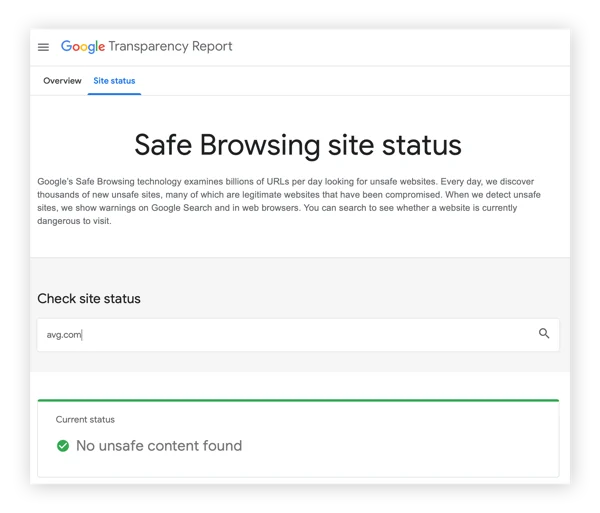How to Check Website Uptime: Top Server Uptime Monitoring Tools You Should Use
Discover how to check website uptime and why server uptime monitoring tools are essential to ensure your website is always online. Learn about top uptime monitoring tools and stay ahead of downtime issues.
Posted by
 Sabyr Nurgaliyev
Sabyr Nurgaliyev
Introduction
When your website is down, it’s not just annoying—it can cost you visitors, sales, and even your reputation. Ensuring your site stays online with minimal downtime is critical, which is where server uptime monitoring tools come in. But what are these tools? And how can they help you check your website’s uptime?
In this post, we'll break down everything you need to know about uptime, from why it’s important to how you can monitor it effectively. Stick around, and we’ll dive into the best tools for the job, giving you practical tips to keep your site performing like a champ.
What is Website Uptime?
Website uptime refers to the time your site is fully functional and accessible to visitors. It’s usually expressed as a percentage, with 100% being the ideal target. But let’s face it, 100% uptime is a rare beast. More often than not, a solid 99.9% uptime is what most businesses aim for, which translates to just a few minutes of downtime per month.
Why is Website Uptime Important?
Imagine a visitor landing on your website, ready to make a purchase or read your blog—only to find the site down. Not only does this frustrate users, but it also damages your brand and could cost you revenue. Even worse, search engines like Google don’t like sites that frequently go offline, which could impact your SEO rankings. Keeping your uptime in check is crucial for both user experience and maintaining a competitive edge in search engine results.
How Do You Check Website Uptime?
Now, how do you check website uptime effectively? While you can manually check your site by visiting it periodically, that’s neither practical nor efficient. Automated uptime monitoring tools do this for you, giving you instant notifications if your site goes down.
Understanding Server Uptime Monitoring
What is Server Uptime?
Server uptime is the amount of time a server stays operational and accessible. Servers are the backbone of websites, and when they go down, so does everything else. Server uptime is often measured in percentage, and anything above 99% is considered reliable.
Why Server Uptime Monitoring is Crucial
Whether you're running a small blog or a large e-commerce platform, server uptime is critical. Monitoring your server's uptime allows you to catch issues before they impact your users. Imagine if your server went down for hours and you didn’t know until it was too late—that’s a scenario no website owner wants to face. Having a reliable server uptime monitor in place ensures you get alerts the second something goes wrong.
Best Uptime Monitoring Tools for Websites
1. Pingdom
One of the most well-known names in uptime monitoring, Pingdom offers real-time monitoring and performance insights. It tracks your website from multiple locations around the globe, letting you know if your site is down anywhere in the world. Pingdom also provides detailed reports, which can help you improve your site’s performance over time.
2. UptimeRobot
Looking for a free tool to monitor your uptime? UptimeRobot is a popular choice for smaller websites. It offers a robust free plan that monitors your website every five minutes. You get notifications via email, SMS, or even third-party apps like Slack if something goes wrong.
3. StatusCake
Another big player in uptime monitoring is StatusCake. Known for its ease of use and clean interface, StatusCake offers detailed uptime reports and notifies you instantly if your website goes down. You can also integrate it with tools like Google Analytics for added insights.
4. Datadog
If you're after something with more depth, Datadog offers more than just uptime monitoring. This tool provides detailed analytics, performance insights, and uptime data all in one place. It’s ideal for businesses that need more advanced monitoring features and the ability to troubleshoot server issues on the go.
5. UptimeFriend
UptimeFriend is a reliable monitoring tool that offers a variety of features. Key features include:
- Real-time Monitoring: Get instant alerts when your website goes down.
- Performance Reports: Analyze your website's performance over time.
How to Use Uptime Monitoring Tools Effectively
1. Set Up Real-Time Alerts
Most tools offer real-time alerts via SMS, email, or apps like Slack. Be sure to configure these so that you're the first to know when something goes wrong.
2. Check Reports Regularly
Some tools offer detailed reports showing you trends over time. Checking these reports can help you spot issues before they turn into big problems.
The Role of Server Uptime Monitoring Tools
What Are Server Uptime Monitoring Tools?
These tools specifically monitor the uptime of your server, notifying you the moment your server goes offline. This kind of monitoring is vital because downtime affects everything hosted on the server—not just a single website. Tools like New Relic or Datadog provide server health insights alongside uptime data, which can help you solve underlying performance issues.
How Server Uptime Monitoring Tools Help Your Business
These tools aren’t just about spotting downtime. They also track server performance, helping you optimize resources, troubleshoot errors, and ultimately keep your business online. A server uptime monitoring tool is an investment that pays off in the form of better performance and fewer disruptions.
What Happens When a Website Goes Down?
Downtime doesn’t just impact visitors; it also affects your bottom line. Here’s how:
- Lost Revenue: For e-commerce sites, even a minute of downtime can mean missed sales.
- SEO Impact: Google penalizes sites with frequent downtime by lowering their search rankings.
- Brand Damage: A website that frequently goes down can lose customer trust.
How to Prevent Website Downtime
1. Use Reliable Hosting
Choosing a reputable hosting provider with a proven uptime record is half the battle. Look for companies that guarantee at least 99.9% uptime.
2. Monitor Traffic Spikes
Sudden surges in traffic can overwhelm your server, leading to crashes. Monitoring your traffic allows you to scale your resources when needed.
3. Automate Backups
Regular backups ensure that if your site does go down, you can restore it quickly without losing data. This is crucial for minimizing downtime after a major outage.
FAQs
1. How often should I check website uptime?
Most tools check your website every 5 to 15 minutes. However, more frequent checks (e.g., every minute) may be useful for high-traffic websites.
2. Can I use free tools to monitor uptime?
Yes, tools like UptimeRobot and StatusCake offer free plans that monitor uptime effectively for small to medium websites.
3. How does downtime affect SEO?
Downtime can negatively impact SEO because search engines prioritize user experience. If your site is frequently down, it could lower your rankings.
4. What is the best server uptime monitoring tool?
It depends on your needs. For a simple solution, UptimeRobot is great. For more detailed analytics and server performance data, tools like Datadog or New Relic are better suited.
5. How do I get notified if my website goes down?
Most uptime monitoring tools offer notifications via email, SMS, or third-party apps like Slack. You can set these up to receive real-time alerts.
6. How do uptime monitoring tools work?
These tools regularly check your website or server from multiple locations around the world. If they detect downtime, they alert you immediately, allowing you to take action quickly.
Conclusion
Monitoring your website’s uptime is crucial for maintaining your site’s performance, user experience, and SEO rankings. With the right tools in place, you’ll be the first to know when something goes wrong, allowing you to act quickly and minimize any damage. Tools like Pingdom, UptimeRobot, and Datadog offer a range of features from real-time monitoring to in-depth analytics, helping you stay on top of any issues.
Lastly, if you’re in the market for an affordable, reliable solution to monitor your server’s uptime, consider UptimeFriend—a simple yet effective tool designed to keep your website running smoothly.
Links to mentioned services:
Related Articles

Learn how to keep your website running smoothly with server uptime monitoring tools and techniques.
 Sabyr NurgaliyevOct 28, 2024
Sabyr NurgaliyevOct 28, 2024
Discover the best practices and tools for ensuring your website remains accessible and reliable.
 Sabyr NurgaliyevOct 26, 2024
Sabyr NurgaliyevOct 26, 2024
Learn effective strategies to check website uptime and monitor server performance, ensuring a smooth user experience.
 Sabyr NurgaliyevOct 25, 2024
Sabyr NurgaliyevOct 25, 2024
Learn how to check website uptime and use server uptime monitoring tools to ensure your site runs smoothly without disruptions.
 Sabyr NurgaliyevOct 24, 2024
Sabyr NurgaliyevOct 24, 2024
Learn the best ways to check website uptime, explore server uptime monitoring tools, and ensure your site stays online with reliable monitoring.
 Sabyr NurgaliyevOct 23, 2024
Sabyr NurgaliyevOct 23, 2024
Learn how to effectively check website uptime and the best server uptime monitoring tools to ensure smooth web performance. Explore detailed insights, tips, and more.
 Sabyr NurgaliyevOct 12, 2024
Sabyr NurgaliyevOct 12, 2024